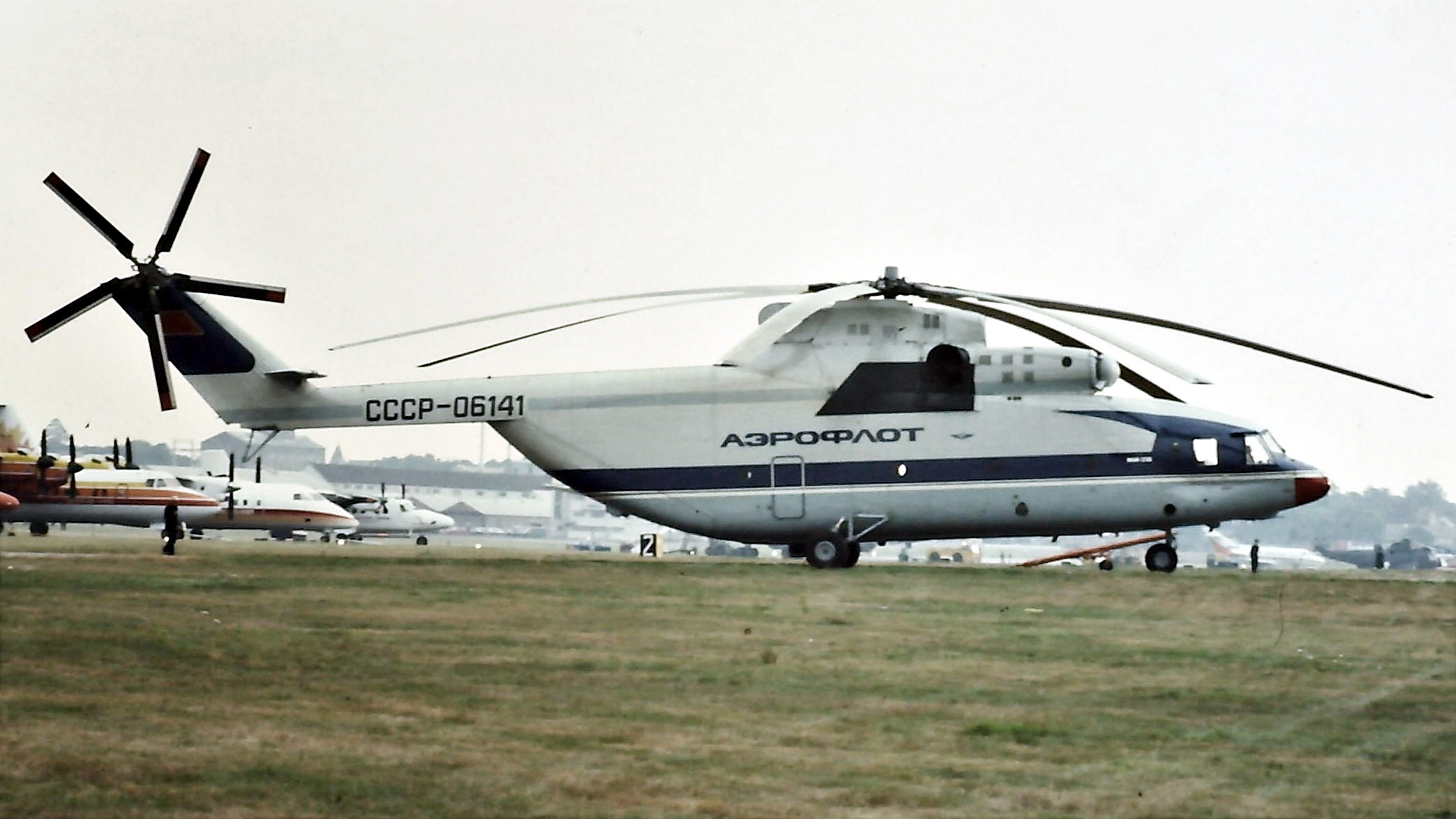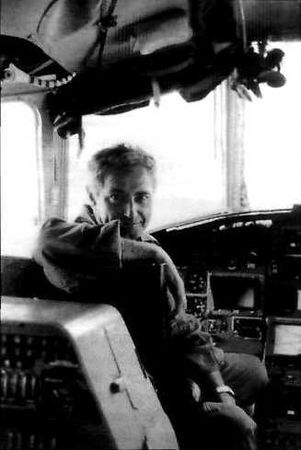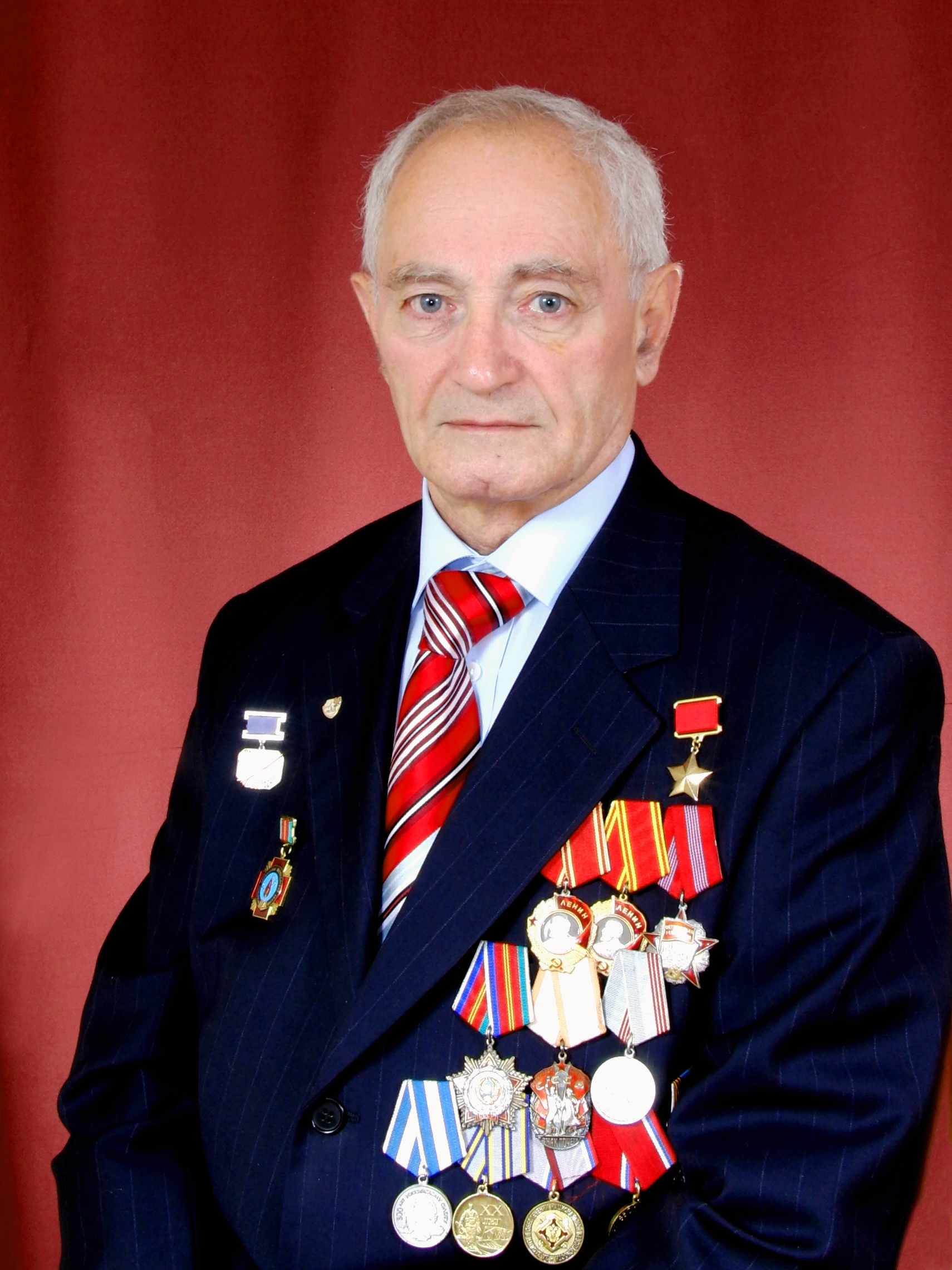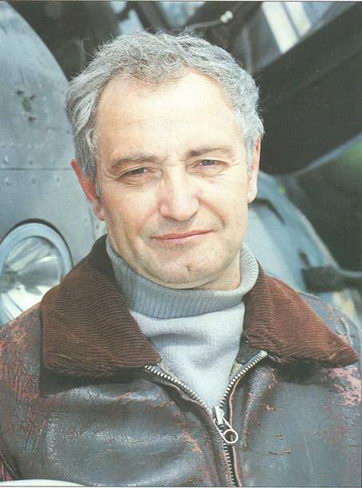
2–4 February 1982: Over a three-day period, several flight crews set a series of Fédération Aéronautique Internationale (FAI) payload-to-altitude world records at Podmoskovnoe. They flew an OKB Mil Design Bureau Mi-26 heavy lift helicopter.

On 2 February, Gurgen Rubenovich Karapetian and Y. Chapaev flew to 6,400 meters (20,997 feet) with a 10,000 kilogram (22,046.2 pound) payload.¹
The OKB Mil Design Bureau’s Mi-26 is the world’s largest helicopter. It is a twin-engine, single main rotor/tail rotor helicopter with fixed tricycle landing gear. It is normally operated by two pilots, a navigator, flight engineer and flight technician, and can carry as many as 90 passengers.
The Mi-26 has an overall length with rotors turning of 40.025 meters (131 feet, 3.8 inches) and height of 8.145 meters (26 feet, 8.7 inches). The main rotor has a diameter of 32.00 meters (104 feet, 11.8 inches). The helicopter has an empty weight of 28,200 kilograms (62,170 pounds) and maximum takeoff weight of 56,000 kilograms (123,459 pounds).
The eight-blade fully-articulated main rotor system turns clockwise at 132 r.p.m. (the advancing blade is on the left). A five-blade tail rotor is mounted on the right side of a pylon in a pusher configuration. The tail rotor turns clockwise as seen from the helicopter’s left side (the advancing blade is below the axis of rotation).
Power is supplied by two Lotarev D-136 turboshaft engines producing 8,500 kW (11,399 shaft horsepower), each.
The cruise speed of the Mi-26 is 255 kilometers per hour (158 miles per hour) and maximum speed is 295 kilometers per hour (183 miles per hour). The hover ceiling, out of ground effect (HOGE), is 1,800 meters (5,905 feet), and the service ceiling is 4,600 meters (15,092 feet), though on 2 February 1982, test pilot Gurgen Karapetyan, who flew with Grishchenko at Chernobyl, flew an Mi-26 to 6,400 meters (20,997 feet) carrying a 10,000 kilogram (22,046 pound) payload.¹ The maximum payload is 20,000 kilograms (44,092 pounds). The helicopter’s range, carrying an 18,000 kilogram (39,683 pounds) payload is 670 kilometers (416 miles).
The Mi-26 first flew in 1977. Production began in 1980. The helicopter remains in service with both military and civil operators.

Gurgen Rubenovich Karapetyan (Гурген Рубенович Карапетян) was born 9 December 1936 in what is now Ekaterinberg, Sverdlovsk, Russia. He learned to fly a Polikarkpov Po-2 (NATO identifier, “Mule”) at the Sverdlovsk flying club at the age of 15.
Karapetyan served in the Soviet Air Force from 1956 to 1963. His rank was first lieutenant. An uncle advised him to attend the Moscow Aviation Institute, and he graduated in 1961. He worked as an engineer at Mil Design Bureau and then attended test pilot school. From 1962 to 1993, Karapetyan was a test pilot for the Mil Moscow Helicopter Plant, becoming the chief test pilot in 1974.

In April 1986, along with Anatoly Demyanovich Grishchenko, Gurgen Karapetyan flew a Mil Mi-26 helicopter dropping loads of sand and wet cement on the wreckage of the Chernobyl Reactor Number 4, which had been destroyed by an explosion. Carrying 15 ton loads suspended from an 800-foot (244 meters) cable, they made repeated trips while flying through the radioactive gases released from the plant. Grishchenko later died as a result of radiation exposure.
On 24 January 1993, President Mikhail Gorbachev named Karapetyan a Hero of the Soviet Union. He was twice awarded the Order of Lenin, and is an Honored Test Pilot of the Soviet Union.
Gurgen Karapetyan has set 10 world records in helicopters. He has flown more than 5,500 hours in 39 helicopter types.
Gurgen Rubenovich Karapetyan died 6 December 2021 at the age of 84 years.
¹ FAI Record File Number 9902
© 2025, Bryan R. Swopes
Sadly, Mr Karapetyan has passed away December 7, 2021.
A brave man among many brave men doing their best to contain that catastrophe.
Hi Bryan,
With you being a helicopter guy, I’d very much like to hear your opinion and thoughts on this helicopter. Thanks, and as always, I appreciate your work!
To be honest, Pete, I only know what I have read about it. I’ve never even seen one. But they are AMAZING!